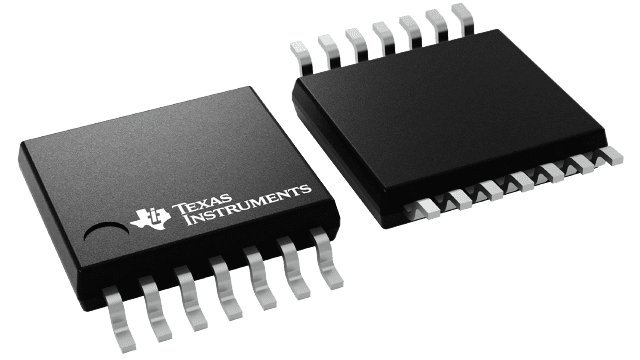패키징 정보
| 패키지 | 핀 TSSOP (PW) | 14 |
| 작동 온도 범위(°C) -40 to 85 |
| 패키지 수량 | 캐리어 90 | TUBE |
MSP430G2231의 주요 특징
- Low Supply-Voltage Range: 1.8 V to 3.6 V
- Ultra-Low Power Consumption
- Active Mode: 220 µA at 1 MHz, 2.2 V
- Standby Mode: 0.5 µA
- Off Mode (RAM Retention): 0.1 µA
- Five Power-Saving Modes
- Ultra-Fast Wake-Up From Standby Mode in Less Than 1 µs
- 16-Bit RISC Architecture, 62.5-ns Instruction Cycle Time
- Basic Clock Module Configurations
- Internal Frequencies up to 16 MHz With One Calibrated Frequency
- Internal Very Low Power Low-Frequency (LF) Oscillator
- 32-kHz Crystal
- External Digital Clock Source
- 16-Bit Timer_A With Two Capture/Compare Registers
- Universal Serial Interface (USI) Supporting SPI and I2C
- Brownout Detector
- 10-Bit 200-ksps A/D Converter With Internal Reference, Sample-and-Hold, and Autoscan (See )
- Serial Onboard Programming, No External Programming Voltage Needed, Programmable Code Protection by Security Fuse
- On-Chip Emulation Logic With Spy-Bi-Wire Interface
- Available in 14-Pin Plastic Small-Outline Thin Package (TSSOP) (PW), 14-Pin Plastic Dual Inline Package (PDIP) (N), and 16-Pin QFN Package (RSA)
MSP430G2231에 대한 설명
The Texas Instruments MSP430 family of ultra-low-power microcontrollers consists of several devices featuring different sets of peripherals targeted for various applications. The architecture, combined with five low-power modes, is optimized to achieve extended battery life in portable measurement applications. The device features a powerful 16-bit RISC CPU, 16-bit registers, and constant generators that contribute to maximum code efficiency. The digitally controlled oscillator (DCO) allows wake-up from low-power modes to active mode in less than 1 µs.
The MSP430G2x21/G2x31 series is an ultra-low-power mixed signal microcontroller with a built-in 16-bit timer and ten I/O pins. The MSP430G2x31 family members have a 10-bit A/D converter and built-in communication capability using synchronous protocols (SPI or I2C).
Typical applications include low-cost sensor systems that capture analog signals, convert them to digital values, and then process the data for display or for transmission to a host system.
